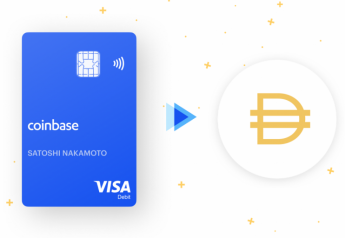Imagine owning a piece from “Buckingham Palace” or “Mona Lisa Painting”. Obviously, you can’t really buy a piece of one of these precious pieces, but modern concepts have now made it possible to literally “own a piece” of an asset, and why not one of those prestigious assets?
Tokenization of assets
In today’s modern world, almost every asset has a singularly defined property. In other words, every asset, like real estate, works of art or even your favorite sports team, has a singularly defined property.
However, blockchain technology has the potential to completely change the landscape of this ‘defined asset’. The blockchain allows an asset to be tokenized so that each asset can be divided into several fractions. Each fraction can belong to different entities. In other words, asset tokenization allows any asset to have clearly defined multiple ownership.
The asset, held in fraction by several parties, can be symbolized using security tokens. These tokens are raised on a blockchain platform and they are backed by a real underlying asset. The importance of a security token is that it facilitates defined actions, pays dividends, and collects profits. Each security token represents equivalent shares of the underlying asset. For example, real estate land worth $ 100,000 can be divided into 1,000 security tokens, each token worth $ 100.
Exciting, isn’t it?
What can we tokenize?

Tokenization has potentially opened up new areas that have further expanded the possibilities. This includes the symbolization of intangible assets such as copyrights, patents, stocks and bonds as well as tangled assets such as land, precious metals or even exclusive works of art.
Security tokens further allow the exchange, purchase or sale of these tokens. Utilities tokens or crypto – currencies tend to lose value as they have no real support. But because security tokens represent an underlying tangible or intangible asset, their behavioral characteristics are different from utility tokens.
Company shares

Let’s say you want to invest $ 1,000 to buy public shares of a few companies. However, the amount of investment eliminates large organizations like Google because their share price is over $ 1,000. Plus, if you even invest a stock with Google, it automatically eliminates the possibility of diversifying your portfolio by investing in multiple stocks.
Tokenization allows you to buy shares of these large companies by allowing you to buy fractions of a share. Therefore, instead of buying a stock, you can choose to buy 1 / 4th of the stock and receive subsequent returns or profits. In addition, it would also allow you to diversify your portfolio from the same amount of investment.
Tokenizing financial instruments such as company shares would also increase market liquidity. It also promotes inclusiveness by reaching out to a wider audience regardless of value or price.
Immovable

One of the areas where tokenization can deliver maximum value is the real estate industry. This is due to several reasons. Our conventional real estate sector has multiple shortcomings. This includes exclusive with high barriers to entry, various bottlenecks, reduced liquidity and largely opaque.
Tokenized real estate allows real estate or land to be divided into several fractions on the blockchain. Each fraction represents a share of the property. Essentially, tokenization facilitates fractional ownership of a real estate asset. It can also offer a number of advantages.
First of all, it removes real estate barriers in terms of the amount of investment required. Anyone can buy shares in real estate and additionally receive rental benefits or the return on a real estate investment. Then, it increases the liquidity flowing in the market by allowing inclusiveness in the market. Third, it also makes it possible to invest in spaces offering a higher return but difficult to access. Concrete example: token parking spaces. Apart from that, it also promotes transparency with blockchain in any real estate process.
Stablecoins

Stablecoins are probably the most simplified tokenization application. Stablecoins are cryptocurrencies linked to a fiat currency like the US dollar or the euro.
The blockchain has multiple advantages due to its main protocol. For financial transactions, it can offer various advantages including instant transfers, cross-border transactions, negligible fees, and much higher security than our traditional instruments. In addition, a practical application with all the advantages mentioned above already exists, namely bitcoin.
Stable coins that are backed by the underlying fiat currencies can be used for industries like cross-border remittances. It would involve a financial process which is an easy, instant and inexpensive approach.
Funding
The blockchain offers fundamental advantages when it comes to financing. The first, but not in retrospect to tokenization, is that blockchain has provided a platform for raising funds. A variety of ICOs and blockchain startups have raised funds for their projects via tokens. Startups can reach a larger number of investors even without a platform and subsequently investors can find a number of projects to pool with their money.
Through tokenization, fund shares can be distributed on a blockchain ledger. This further ensures an efficient exchange of shares on the blockchain itself. Therefore, the ownership of shares in the fund is clearly defined. Similar to company stock, tokenization provides fractional ownership of funding and therefore allows for higher liquidity.
In addition, different legal obligations depending on the parameters can also be programmed into the blockchain. This only allows eligible parties to participate in the funding process. Blockchain tokenization also removes the need for intermediaries to monitor the process. Most tasks can be automated using smart contracts and thus reduce additional costs.
Raw materials

From sugar to coffee, various factors affect the market including location, supply and demand, currency exchange rates, etc. With a number of factors setting the real-time price of individual products, it has given rise to frauds.
The buying and trading of commodities has always been in the hands of large institutional investors. While millions of commodities are traded every day, much of it is carried out by big players. Tokenization would allow retail investors to be part of this market by allowing investments worth only a few tens of dollars.
Real-time pricing is now widely manipulated by fraud and corruption in the commodities market. Blockchain facilitates a distributed ledger that is transparent and accessible to every member with equal abilities. With greater transparency and verifiable actions, it would become easy to monitor the real-time price of products.
In addition, tokenization can also contribute to the operational activities of the billion dollar commodity market. This can help reduce administrative costs and additional costs. Tokenization can help generate higher liquidity and efficiency in the market.
 English
English  French
French 

